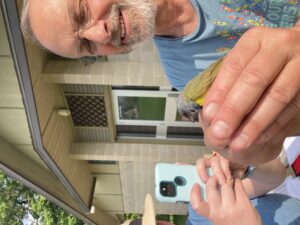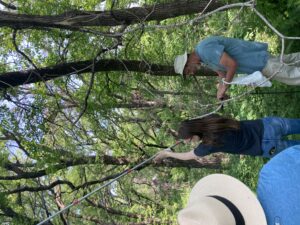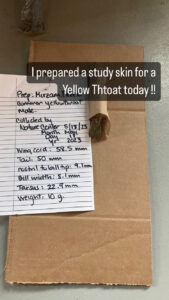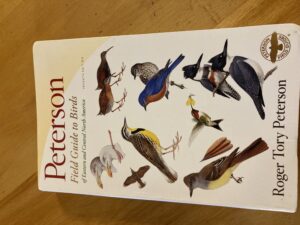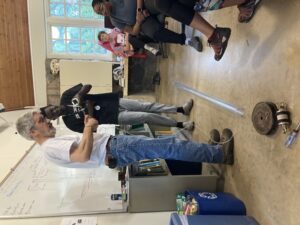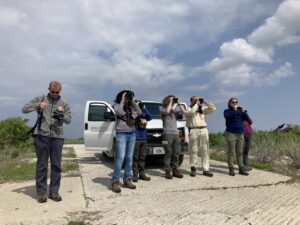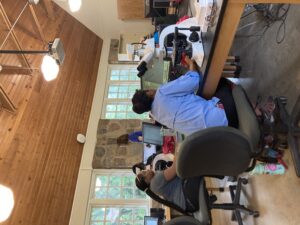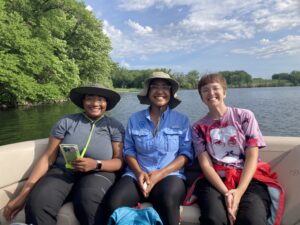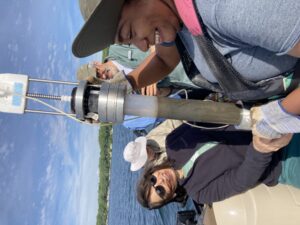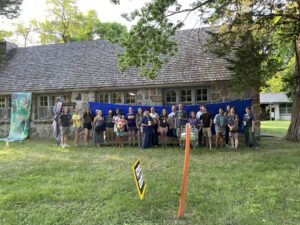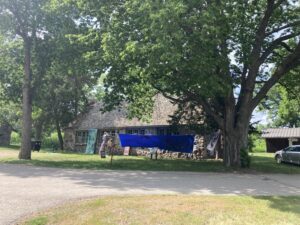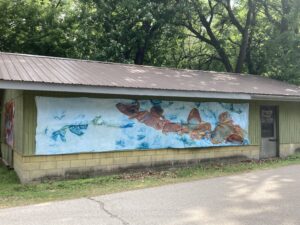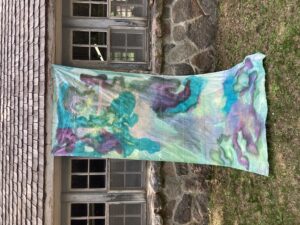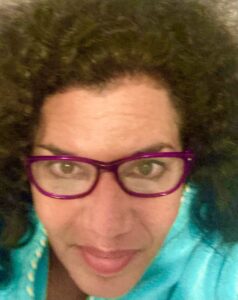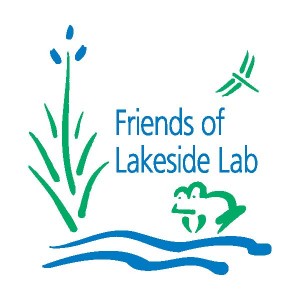Experiments and surprises
by Mirzam Pérez
I love experiments and surprises and thrive on these in my artistic practice. I use unframed raw canvas, taffeta, and satin to create large mixed media landscapes. I layer highly-pigmented color “soups” on the fabric and trace cast shadows from my immediate natural and built environment. Back in the studio, I dress these figures in solid, quiet colors. The figures’ demure sobriety clashes with the background’s commotion. I then attack the surfaces with a variety of tools and materials to arrive at a multi-layer playground for the eye. My final work bears witness to the many steps in its creation because of my experimentation: creases made by the seller when preparing the fabric for shipment, wrinkles in the fabric due to excessive layering of fluid paints, and of course, the wear and tear from throwing, pulling, transporting, and hanging of the strips of material on the wall. In some works, my footsteps have also been immortalized as I moved (or jumped!) about the drying surfaces on the studio floor. All these surprise elements, these ‘casualties of war’, are to be understood as an indispensable part of each work, rather than a detraction. They testify to the intricacy of my process, my intense communion with fabric and paint, and my existence.
At Lakeside Lab, experiments happen everywhere. Surprises too. The faculty and students spend their days learning on the ground, letting their experiences in nature frame their relationship to the environment. As an artist, I was invited by the Diatom and the Ornithology class to join a variety of fieldtrips and exploratory activities. Let me tell you, was I surprised. Here is a list of my top exciting discoveries:
- Surprise 1: The most fun way to learn is in the field. Students will carry all equipment necessary, withstand heat, humidity, ticks, and hunger if their learning is relevant, timely, and active. Nobody complains at Lakeside Lab. They slap on more sunscreen, drink more water, and walk fast to keep up with the professors as they explain and guide. One instructor had impromptu oral quizzes to jog students’ memories as we walked to our marshy destinations. The quizzes felt like games, not assessment activities. The students competed in friendly ways trying to answer the questions and helping each other find the correct answers. I did not know most of the answers but really wanted to participate in this exciting game.
- Surprise 2: Anyone can learn, even if they know very little about a topic. This person would be me. I learned to band birds, understand what I call the “magical realism” of diatoms, prepare a study skin of bird (I’m very proud of this), learn names and calls of local birds, understand the relevance of lake health to an environment, and identify at least six types of diatoms. If you can join a workshop, a class, a field trip, do it. You will learn something very cool and surprise yourself in the process.
- Surprise 3: Interdisciplinary connections happen when you least expect them. Most importantly, interdisciplinary understanding and respect happen on and off the field. As a humanist, I know very little of the processes and methods scientists use in their daily work. After my residence, I know a bit more about it and my curiosity has spiked to conduct research and learn more of certain topics. Likewise, I am convinced that my conversations and studio visits with students and faculty have invited non-artists to reconsider their stance on my discipline. We grow and blossom with these conversations. We learn that we are both working towards a better world and at the end of the day, that’s all that matters.
PS: My gratitude goes out to Professor Neil Berstein (Ornithology) and Professor Mark Edlund (Diatoms) for welcoming me with such patience and kindness into their classrooms. If I’d had science professors as caring and encouraging as them, I probably would be a scientist today. Thanks for making your classrooms a safe and positive space for all students regardless of gender and race. Thanks also to Prof. Dr. Brent Mortensen (Ecology) who invited me to his class as well. Unfortunately, I was unable to join his lovely group of students on the field.
Sincerely,
Mirzam
@mirzamperezart www.mirzamperez.com
